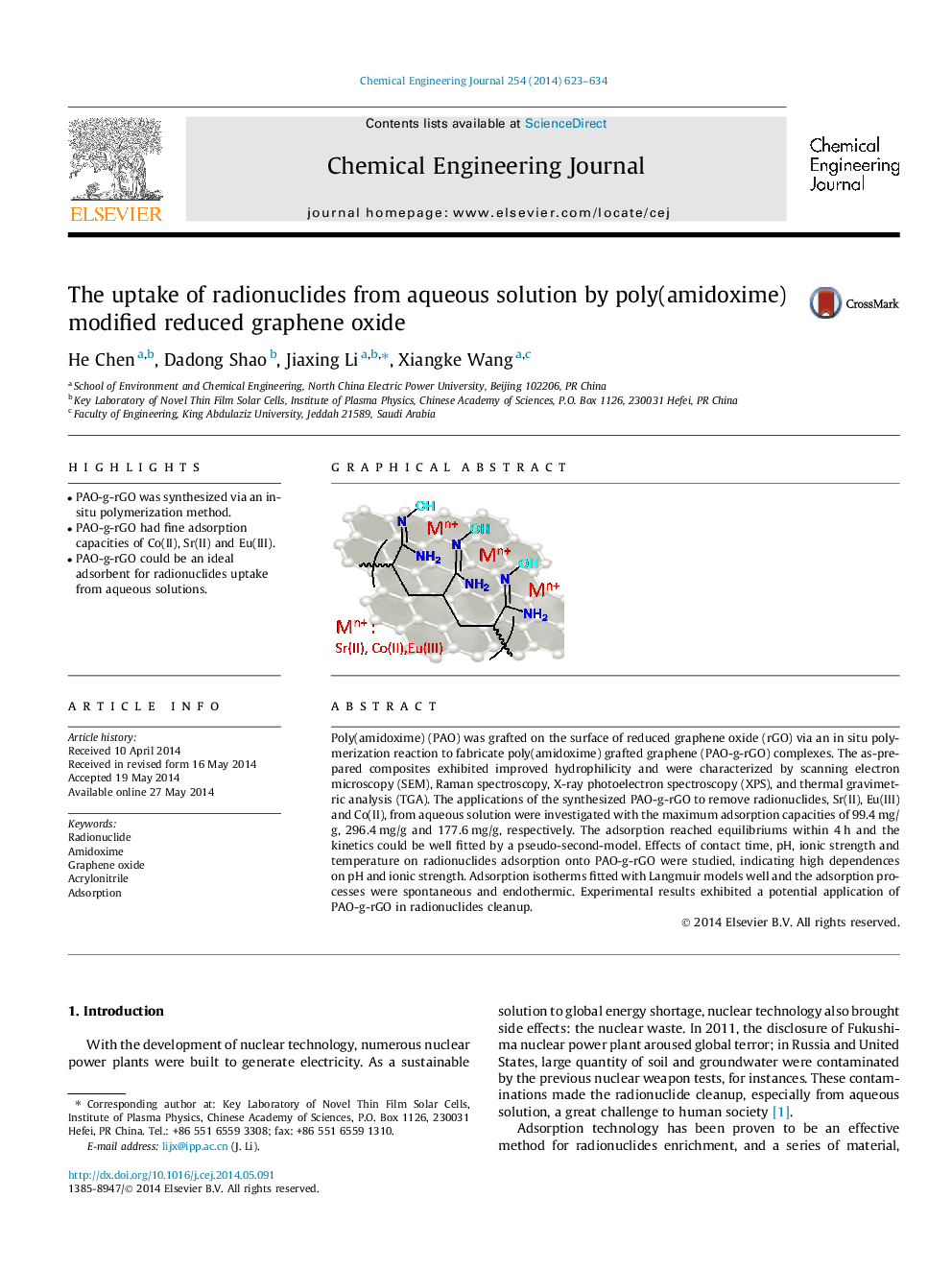| کد مقاله | کد نشریه | سال انتشار | مقاله انگلیسی | نسخه تمام متن |
|---|---|---|---|---|
| 147287 | 456388 | 2014 | 12 صفحه PDF | دانلود رایگان |
• PAO-g-rGO was synthesized via an in-situ polymerization method.
• PAO-g-rGO had fine adsorption capacities of Co(II), Sr(II) and Eu(III).
• PAO-g-rGO could be an ideal adsorbent for radionuclides uptake from aqueous solutions.
Poly(amidoxime) (PAO) was grafted on the surface of reduced graphene oxide (rGO) via an in situ polymerization reaction to fabricate poly(amidoxime) grafted graphene (PAO-g-rGO) complexes. The as-prepared composites exhibited improved hydrophilicity and were characterized by scanning electron microscopy (SEM), Raman spectroscopy, X-ray photoelectron spectroscopy (XPS), and thermal gravimetric analysis (TGA). The applications of the synthesized PAO-g-rGO to remove radionuclides, Sr(II), Eu(III) and Co(II), from aqueous solution were investigated with the maximum adsorption capacities of 99.4 mg/g, 296.4 mg/g and 177.6 mg/g, respectively. The adsorption reached equilibriums within 4 h and the kinetics could be well fitted by a pseudo-second-model. Effects of contact time, pH, ionic strength and temperature on radionuclides adsorption onto PAO-g-rGO were studied, indicating high dependences on pH and ionic strength. Adsorption isotherms fitted with Langmuir models well and the adsorption processes were spontaneous and endothermic. Experimental results exhibited a potential application of PAO-g-rGO in radionuclides cleanup.
Figure optionsDownload as PowerPoint slide
Journal: Chemical Engineering Journal - Volume 254, 15 October 2014, Pages 623–634
